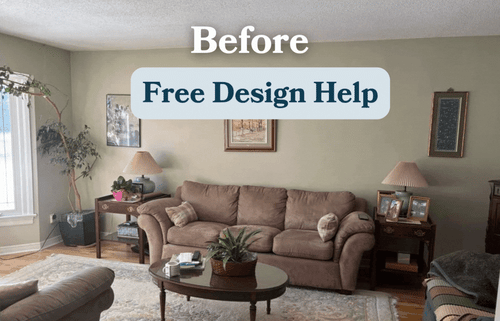How to Fix Leather Furniture: 6 Common Problems and Solutions
July 14, 2025
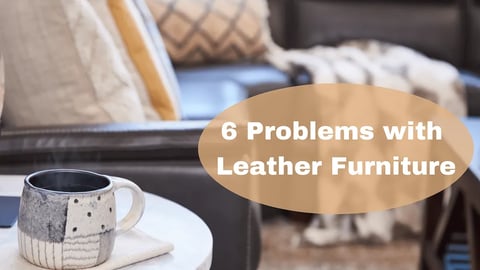
Est. Reading Time: 11 Mins
Leather furniture remains a hallmark of luxury and style, enhancing any living space with its timeless elegance.
In modern society, humans have gravitated towards leather throughout time, and it has always been a valued commodity. What was once used as a basic source of warmth and comfort is still a popular and highly desired material used to enhance the look and feel of good leather furniture.
However, despite its many benefits, leather furniture can experience some common problems over time. This article delves into six issues that can arise with leather furniture, as well as practical solutions to keep your leather pieces looking and feeling their best.
With expert advice from Peter Wason, a seasoned leather repair technician, we’ll walk you through each problem, offer preventive measures, and explain solutions where possible.
Key Takeaways:
- Leather, while luxurious, can be prone to issues like oil absorption, fading, and cracking.
- Preventive care, such as avoiding sunlight and regular conditioning, can extend leather's lifespan.
- Repairing damage in leather depends on the type and quality of the leather upholstery.
- Leather furniture loosening and “puddling” are signs of natural wear, but they can be minimized with maintenance.
- Peter Wason emphasizes the importance of understanding leather types when investing in high-quality pieces.
In This Article…
- How Does Body Oil Affect Leather Furniture?
- Why Does Leather Furniture Fade Over Time?
- What Causes Leather to Crack?
- Why is Leather Furniture Peeling?
- How Do You Get Rid of Leather Furniture Smells?
- Why is My Leather Furniture Wrinkled?
6 Common Problems with Leather Furniture
Now that we've discussed some of the good things about leather, it's time to get into the not-so-good things about leather. While these 6 problems are in fact common, they are also easily treatable and solvable, which you will see with the solutions paired with every problem.
1. How Does My Body Oil Affect Leather Furniture?
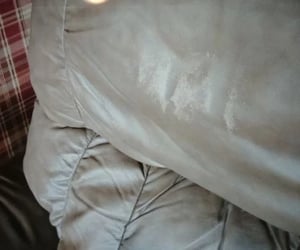
Body oil absorption is one of the most common issues with leather furniture. Over time, oils from skin and hair can darken, discolour, and even crack leather upholstery, especially at high-touch areas like the armrests and headrest.
Prevention: Regular cleaning is key with leather recliner care. Peter Wason advises, “A leather sofa has a delicate balance of fat and water. When a sofa dries out, it starts absorbing oils from you.” To counteract this, use a leather conditioner regularly to maintain the leather’s moisture and balance.
Solution: Unfortunately, once body oil is absorbed, it’s challenging to fully remove. Applying a new dye to the discoloured areas may offer a temporary fix, although it may not bond well due to residual oil. As Peter explains, “Imagine trying to stick a bandaid onto an oily arm.” It may hold temporarily but will likely need reapplication over time.
2. Why Does Leather Furniture Fade Over Time?
Colour fading is inevitable with leather furniture, especially when exposed to UV light or placed near heat sources like fireplaces. Sunlight can drain the pigment, leaving the leather dull and uneven.
Prevention: Avoid placing leather furniture, in direct sunlight or near heating elements. For pieces in rooms with occasional sun exposure, reposition them periodically to distribute fading and protect the leather’s appearance.
Solution: Peter notes that repairs for fading are possible, particularly with pigmented leather. Aniline leather, which is dyed with soluble dye, may be harder to restore without compromising its natural look. If fading has affected more than 30% of the piece, full colour restoration may not be feasible.
3. What Causes Leather to Crack and How Do You Fix It?
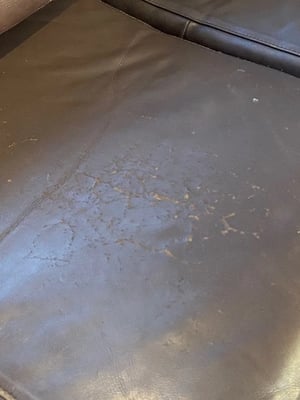
Leather can crack over time, especially in environments with fluctuating humidity levels. Much like skin, leather reacts to its environment, and extreme dryness can cause it to crack, eventually leading to peeling.
Prevention: Keep leather furniture away from windows or heat sources to avoid dryness. Peter recommends using a leather conditioner periodically to maintain moisture levels.
Solution: How to fix a cracked leather sofa can be a little but more complicated. For pigmented leather, cracks can be filled with synthetic compounds and re-dyed, while aniline leather typically requires dye application alone. However, extensive cracking may make repairs impractical, especially in areas with severe damage.
4. Why Is My Leather Furniture Peeling?
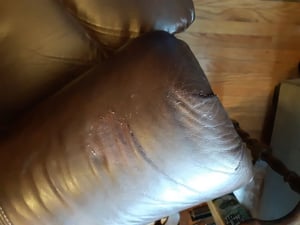
Leather can begin peeling either due to wear and tear from regular use or due to poor-quality leather processing. Body oil accumulation or prior cracking can exacerbate peeling.
Prevention: As with other issues, regular cleaning, conditioning, and placement away from sunlight can help delay peeling. Peter explains that higher-quality leather is less susceptible to peeling than more heavily processed or faux leather options.
Solution: Peeling is generally irreversible. However, for those committed to preserving the piece, leather reupholstery may be a worthwhile investment.
5. How Do You Get Rid of Leather Furniture Smells?
Leather has a unique smell due to the tanning process, and while some appreciate it, others find it overpowering. Poorly tanned leather can sometimes emit an unpleasant odour due to residual rotting agents.
Prevention: While it’s nearly impossible to prevent leather’s natural smell, opting for high-quality leather can minimize unpleasant odours.
Solution: Allowing the leather to “air out” can help reduce the smell over time. Simply open windows or place the furniture in a well-ventilated area to help it dissipate naturally.
6. Why Is My Leather Furniture Wrinkled?
As a natural material, leather will stretch and loosen over time, which can lead to “puddling” and wrinkles, especially as the seat cushions soften with use.
Prevention: Though unavoidable, using dense cushions may help slow the loosening process. Leather stretching is a natural sign of use and is often seen as a mark of quality and longevity.
Solution: Restuffing the cushions can help the leather regain its taut appearance. Additionally, some use heat (such as a hair dryer) to smooth out wrinkles; however, Peter cautions that applying heat can have unpredictable results, potentially distorting the leather permanently. For a more complete fix, consider reupholstery.
What's Next?
So there you have it: the good, the bad, and the ugly of leather furniture! You are now aware of the most common problems to occur in leather furniture, as well as how to fix leather furniture before the irreversible happens.
If you haven’t been scared off, there are some things to keep in mind as you move forward in your hunt for the perfect piece of leather furniture. When considering leather furniture, it is important to know how to maintain this cover's luxurious feel. To learn more about leather maintenance, such as cleaning and how to recondition leather furniture, take a look at this article.
It is also important to know what type or grade of leather is being used. This will affect features like price, durability, flexibility, breathability, and comfort. To get a better idea of the leather selections available at La-Z-Boy, take a look at this article.
We would be happy to answer any of your questions regarding our leather products at any one of our La-Z-Boy locations in the Ottawa and Kingston areas.
We also provide complimentary design services to help ensure that your new luxurious leather sofa or chair fits seamlessly into your home decor.
Related Links:
How Much Does La-Z-Boy Leather Furniture Cost?
Repair vs. Replace Damaged Furniture: How to Decide
How Much Does it Cost to Reupholster a La-Z-Boy Recliner?
(1).jpg?width=150&height=150&name=9C8A3062-Enhanced-NR%20(1)(1).jpg)
Nicholas Carchidi
Content Writer at StyleMeetsComfort.ca
Nick has been the lead content writer for La-Z-Boy Ottawa, Gatineau and Kingston since 2022, specializing in the furniture industry. He collaborates with experts in his field, ensuring that each piece on the La-Z-Boy Learning Centre is accurate and valuable. He provides readers with expert knowledge on all things furniture. If you'd like to learn more about Nick, you can check out his LinkedIn page here.
Product Info Request
Please provide us with your name and email and we'll get back to you as soon as possible regarding this item.

